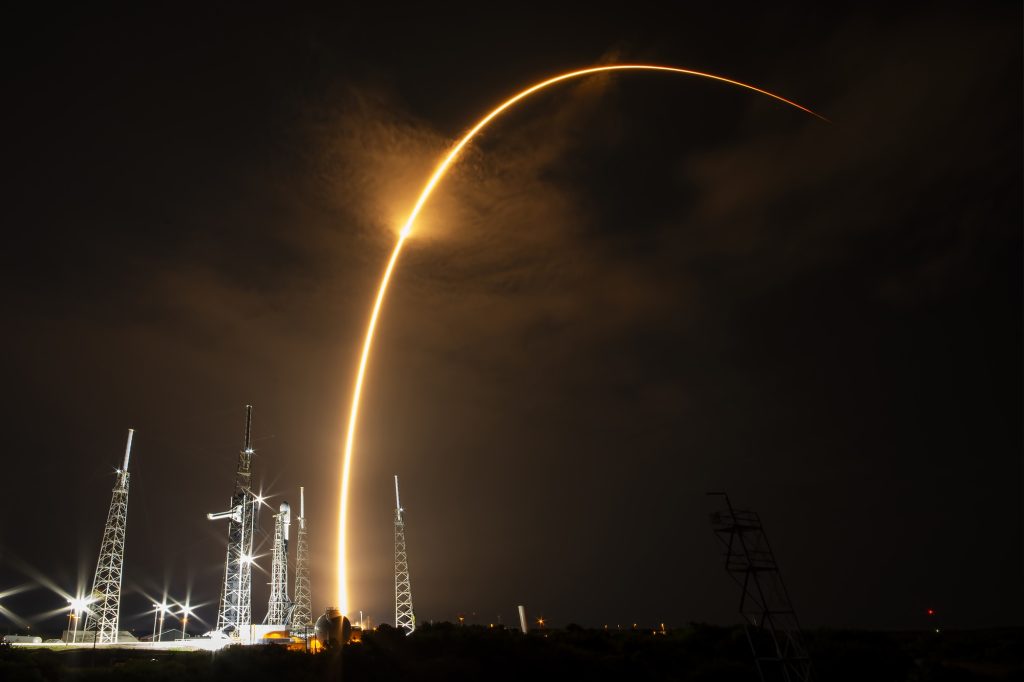WASHINGTON — SpaceX’s Falcon 9 successfully launched a suite of Starlink satellites early on July 27, its first flight since its upper stage experienced an anomaly 15 days ago.
The Falcon 9 lifted off from Launch Complex 39A at the Kennedy Space Center at 1:45 a.m. ET, and the company confirmed the successful launch of its payload of 23 Starlink satellites a little over an hour later.
This launch was the first for Falcon 9. Launch later on July 11thThe rocket’s upper stage also contained the Starlink satellites. A liquid oxygen leak in the rocket’s upper stage prevented the Merlin engine from performing a second burn to circularize the orbit, leaving the 20 Starlink satellites stranded in an unsurvivable low orbit.
SpaceX announced this on July 25th. The cause of the leak was found to be a crack in the sensing line of the upper stage pressure sensor.The cracks were caused by fatigue from engine vibrations and an ineffective clamp holding the tubing in place, and SpaceX said it plans to remove the tubing as a short-term fix because it no longer needs data from the sensor.
The leak caused what SpaceX called “supercooling of engine components,” including the ignition fluid called TEA/TEB that’s needed to restart the Merlin engines. “The ignition fluid got through the lines because it was too cold, too late,” Sarah Walker, SpaceX’s Dragon mission management director, said during a NASA briefing on the Crew 9 mission to the International Space Station on July 26. “The lack of ignition fluid when the fuel and oxygen started to mix caused damage to many parts of the engine.”
The engine anomaly, described as a “hard start,” did not cause extensive damage to the stage, and the satellites were able to be deployed and the engine itself was able to be deactivated, she said. “However, some parts of the engine were damaged and it was unable to complete the second burn.”
SpaceX is scheduled to launch two Falcon 9 rockets on July 28, one from Cape Canaveral and one from Vandenberg Space Station, each carrying Starlink satellites. Following this unusual situation, NASA and Northrop Grumman are likely to be the first non-Starlink customers for the Falcon 9, with a Falcon 9 launch of the Cygnus cargo spacecraft from Cape Canaveral scheduled as early as August 3.
NASA has been closely monitoring SpaceX’s investigation into the upper stage anomaly. “SpaceX has been very transparent,” Steve Stich, NASA’s commercial crew program manager, said in a July 26 briefing, and the NASA team joined the investigation.
He said NASA agreed with the findings and the planned repairs. He said the cracked sensing line “was probably a little bit of a poor design for that environment.” The removal of the sensing line will be subject to “rigorous certification,” including a review of changes to the vehicle software that don’t use data from that sensor before the Crew-9 launch, currently scheduled for after Aug. 18.
He said the incident highlighted how even small parts of a spacecraft can have big effects. “SpaceX made a small change to another transducer that makes a pressure measurement on the same sensing line,” but, not knowing how sensitive that line was to vibrations, they also removed the clamp. “It was a small change that seemed harmless,” he concluded. “It’s a good lesson for all of us involved in human spaceflight, and spaceflight in general, that small changes matter.”
SpaceX’s statement about the malfunction investigation and Walker’s comments at the NASA briefing both described the removal of the sensing line as a short-term solution. When asked what a long-term solution might include, Walker pointed to the upcoming report on the investigation into the upper stage anomaly. “We have some steps planned for the next few weeks,” Walker said, without elaborating on what those steps might be.


